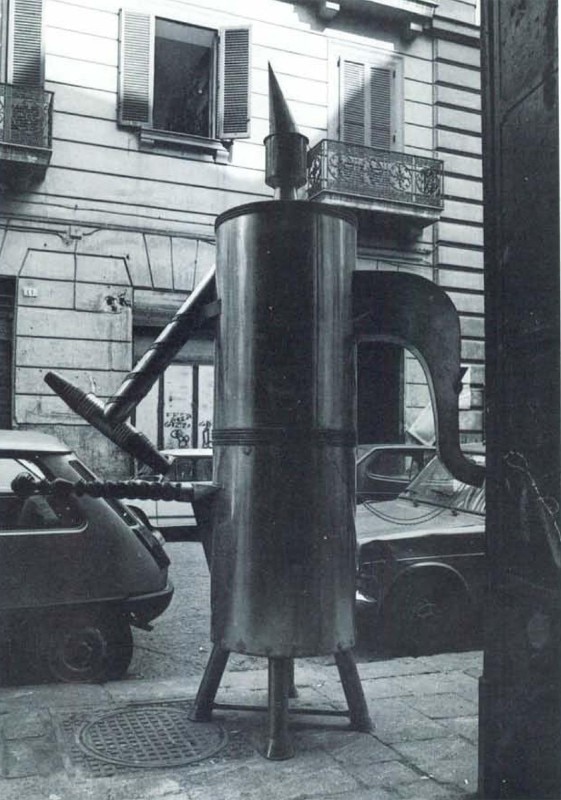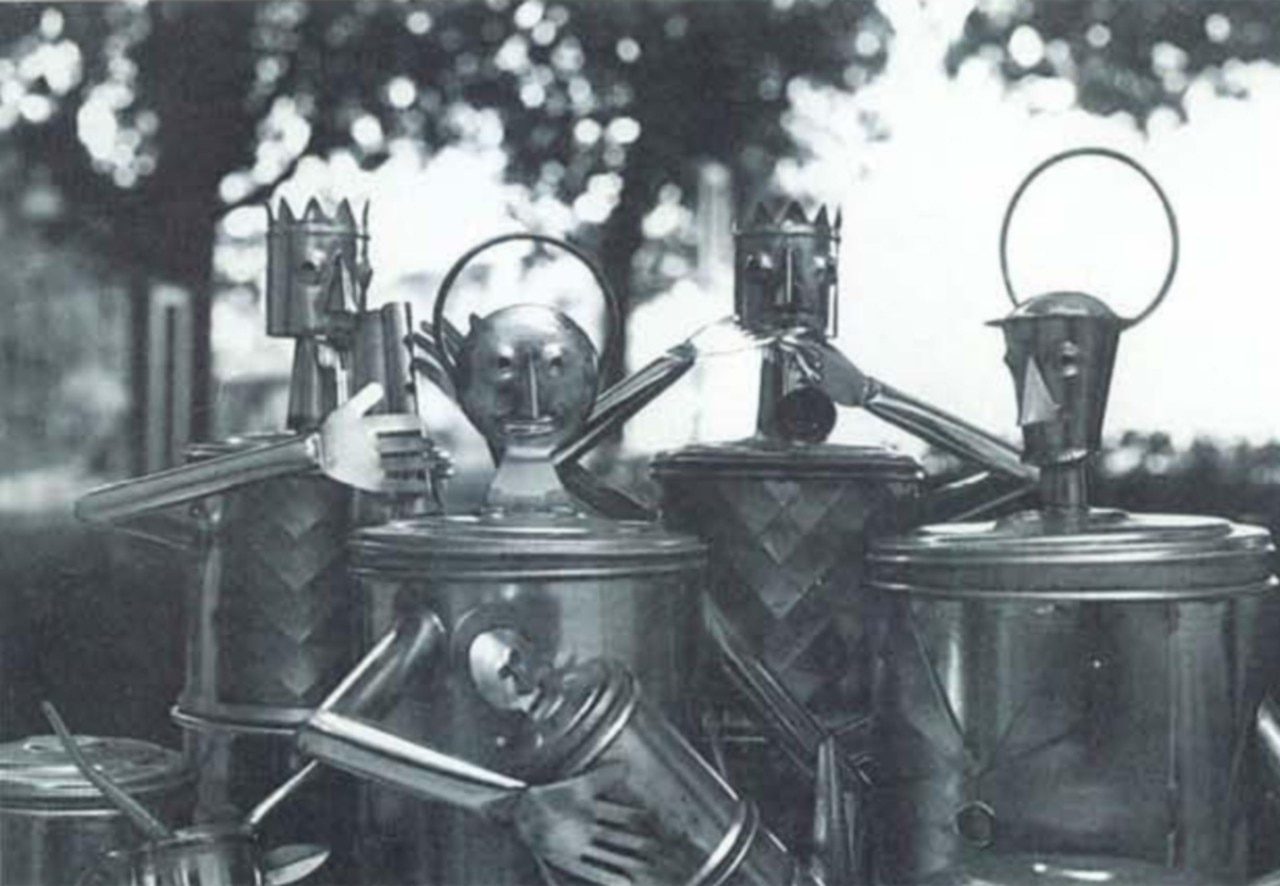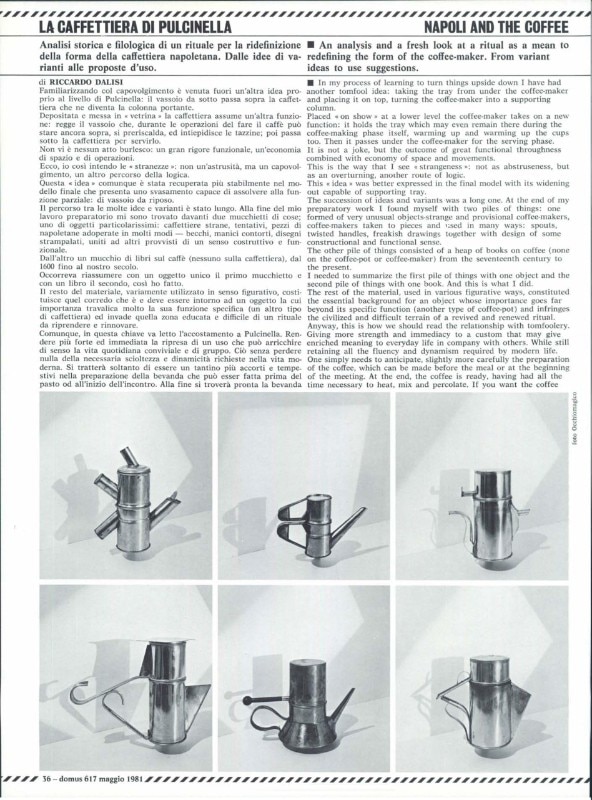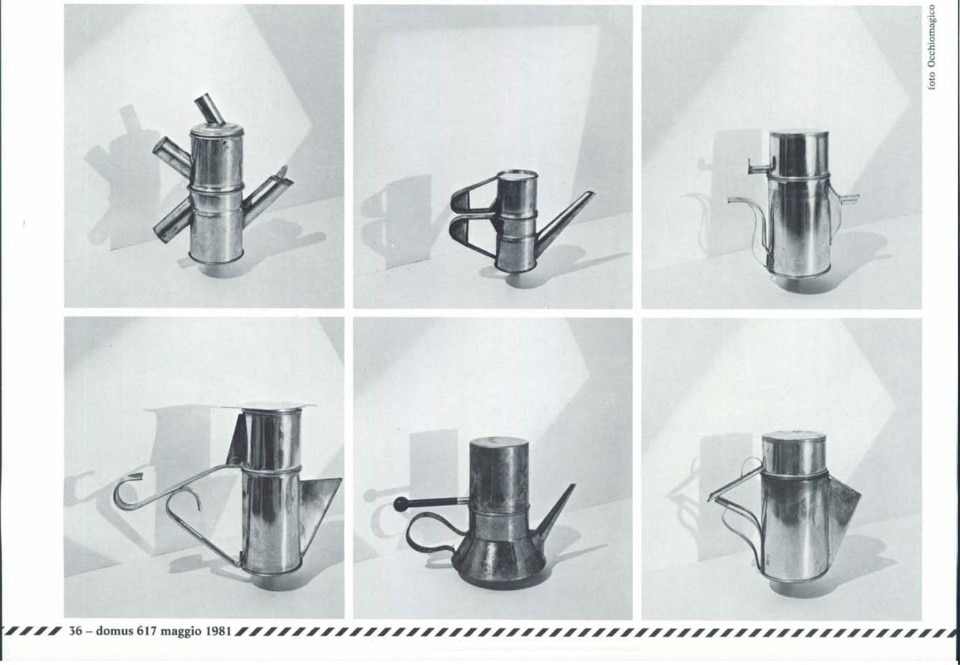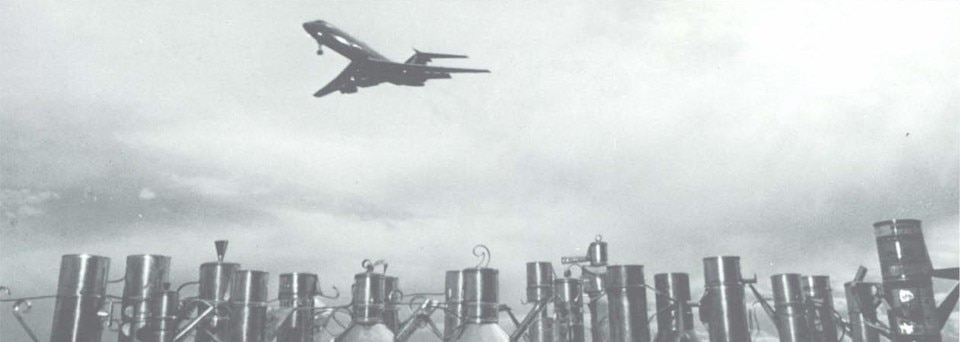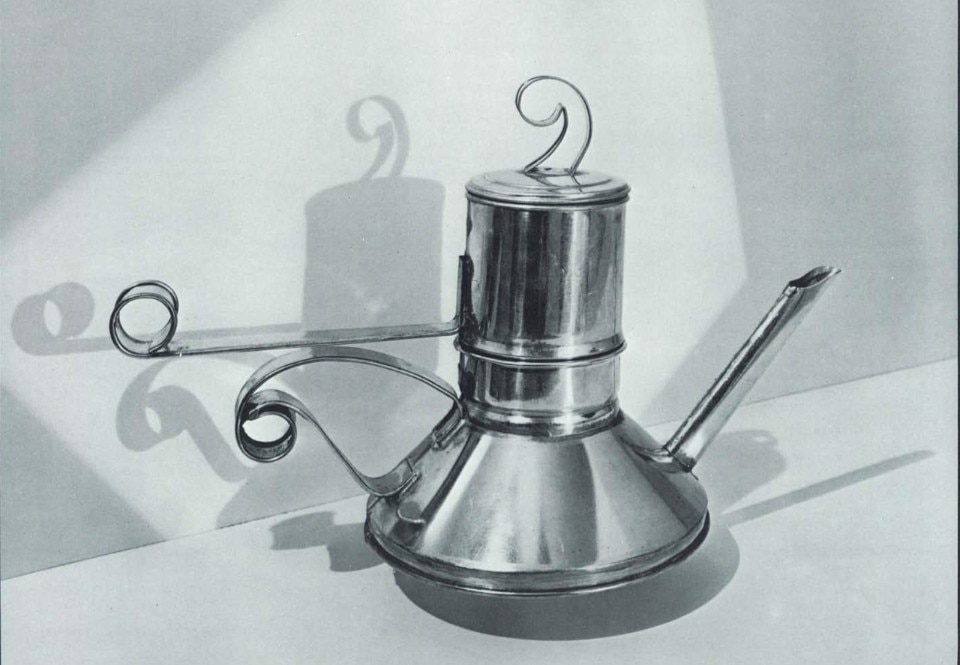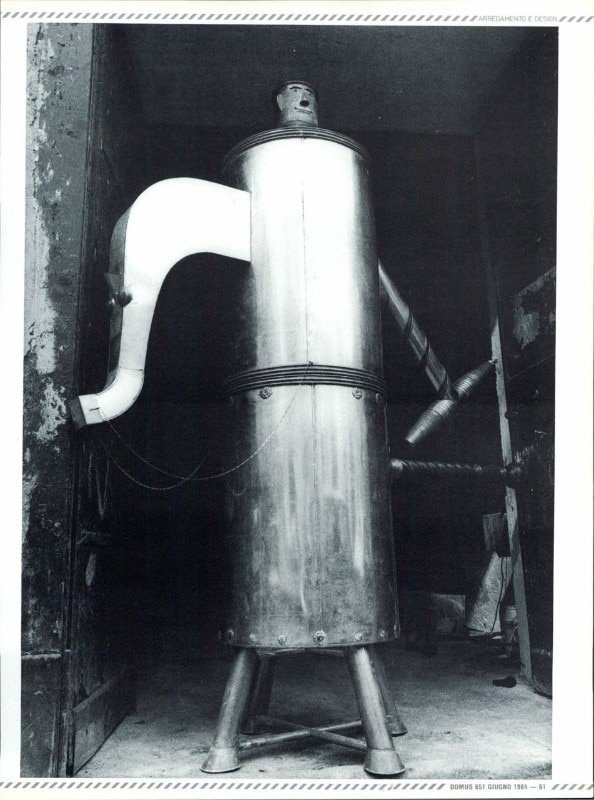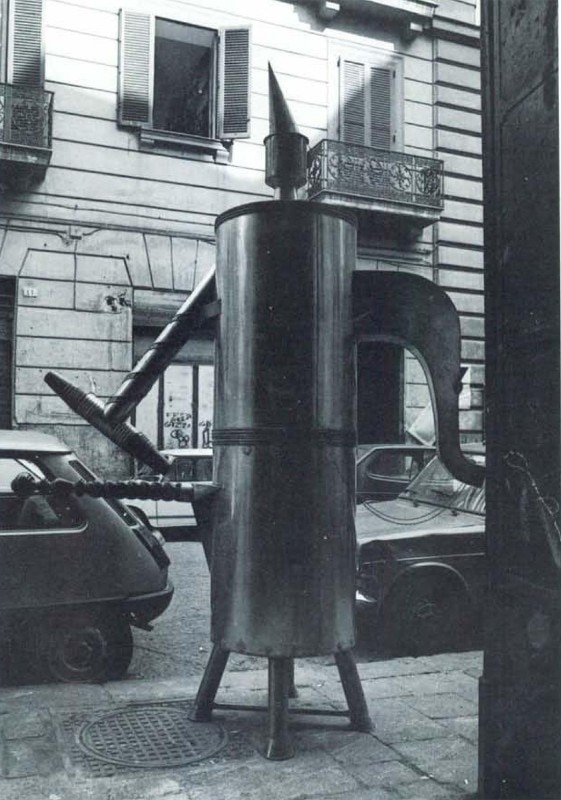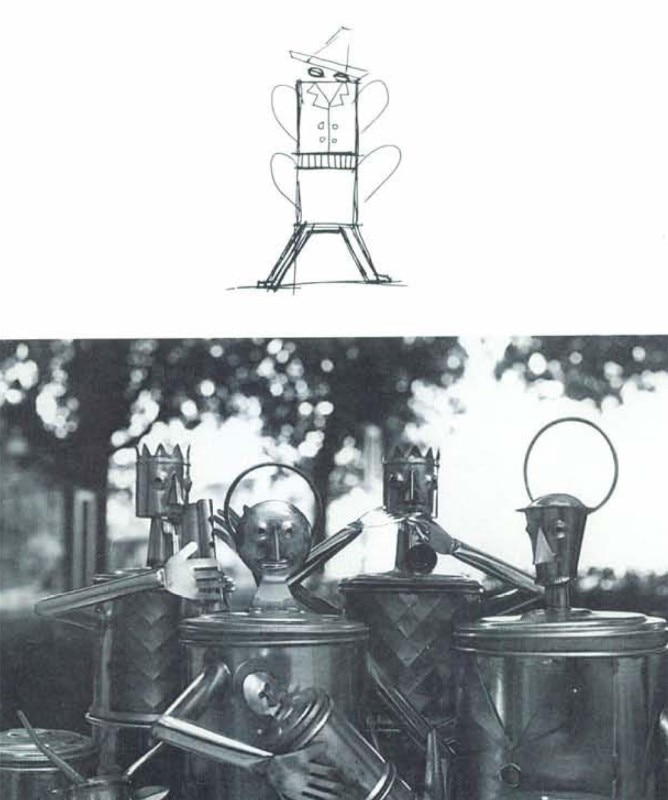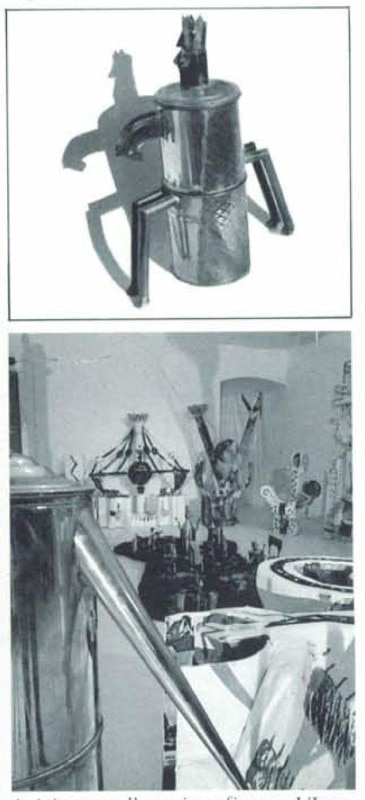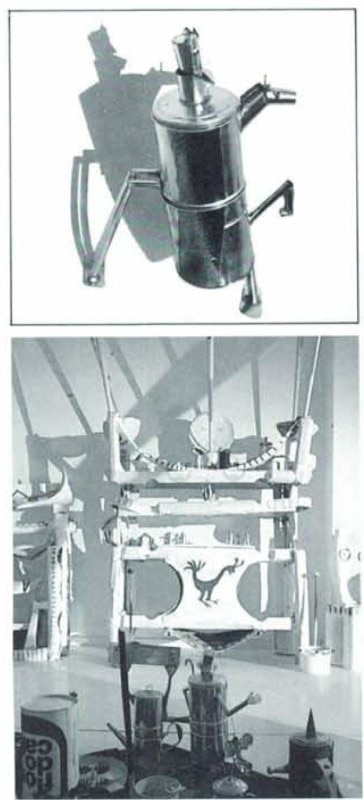Be it the animation of the rione Traiano in Naples or the deconstruction and reconstruction of the Neapolitan coffee pot as the threshold-object for a ritual, a metaphor of nature and the city, Riccardo Dalisi’s work has always drawn its substance from a great attention to material human practices and their cultural and spiritual roots; magical roots, as it has also been said. It was with the coffee pot designed for Alessi that, in 1981, the Neapolitan master (actually born in Potenza in 1931), already called by Ugo La Pietra to found the radical design workshop Global Tools, won the first of his two Compasso d’Oro awards. That year, Dalisi presented on Domus (issue 617, May 1981) a reflection on the components of the coffee ritual, embodied by the coffee pot; three years later, in June 1984, he presented the next step of such reflection on issue 651: a Ippocaffettiera, a technical-magical creature with a theatrical character.
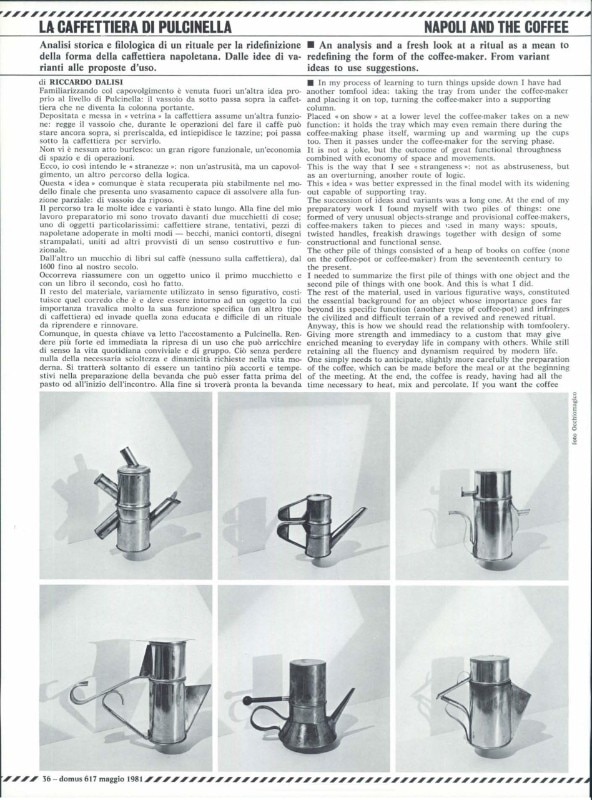
Napoli and the coffee
An analysis and a fresh look at a ritual as a mean to redefining the form of the coffee-maker. From variant ideas to use suggestions.
In my process of learning to turn things upside down I have had another tomfool idea: taking the tray from under to coffee-maker and placing it on top, turning the coffee maker into a supporting column. Placed “on show” at a lower level the coffee maker takes on a new function: it holds the tray which may even remain there during the coffee-making phase itself, warming up and warming up the cups too. Then it passes under the coffee-maker for the serving phase. It is not a joke but the outcome of great functional thoroughness combined with economy of space and movements. This is the way that I see “strangeness”: not as abstruseness, but as an overturning, another route of logic.
This “idea” was better expressed in the final model with its widening out capable of supporting tray. The succession of ideas and variants was a long one. At the end of my preparatory work I found myself with two to piles of things: one formed of very unusual objects – strange and provisional coffee makers taken to pieces and used in many ways: spouts, twisted handles, freakish drawings together with the design of some constructional and functional sense. The other pile of things consisted of a heap of books on coffee (none on the coffee-pot or coffee-maker) from the seventeenth century to the present.
I needed to summarize the first pile of things with one object and the second pile of things with one book. And this is what I did.
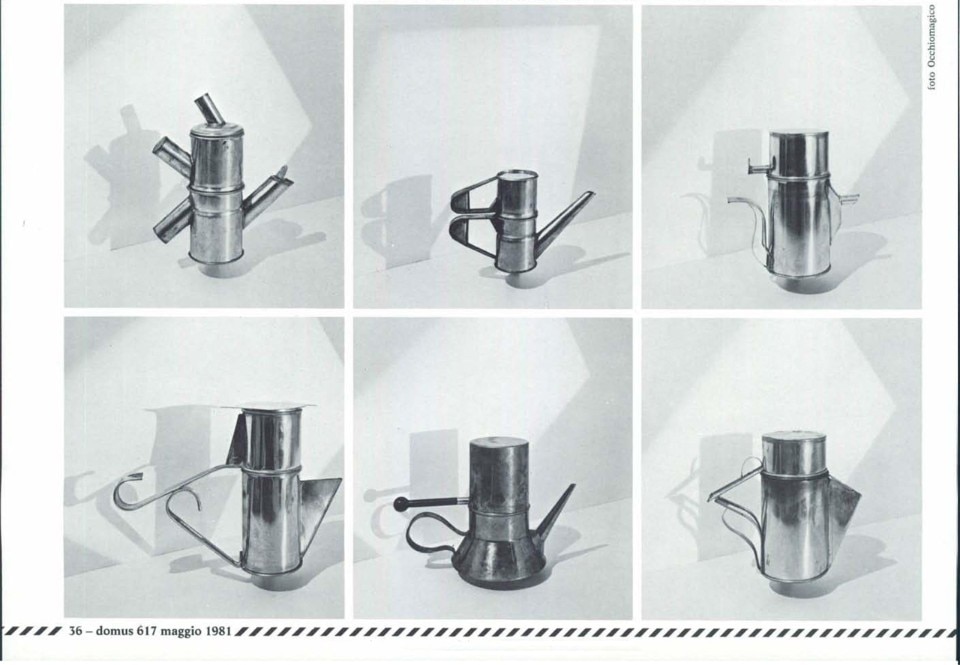
The rest of the material, used in various figurative ways, constituted the essential background for an object whose importance goes far beyond its specific function (another type of coffee pot) and infringes the civilized and difficult terrain of a revived and renewed ritual.
Anyway, this is how we should read the relationship with tomfoolery. Giving more strength and immediacy to a custom that may give enriched meaning to everyday life in company with others. While still retaining all the fluency and dynamism required by modern life.
One simply needs to anticipate, slightly more carefully the preparation of the coffee, which can be made before the meal or at the beginning of the meeting. At the end, the coffee is ready, having had all the time necessary to heat, mix and percolate. If you want the coffee more quickly but a little less strong you simply add on another specially designed filter.
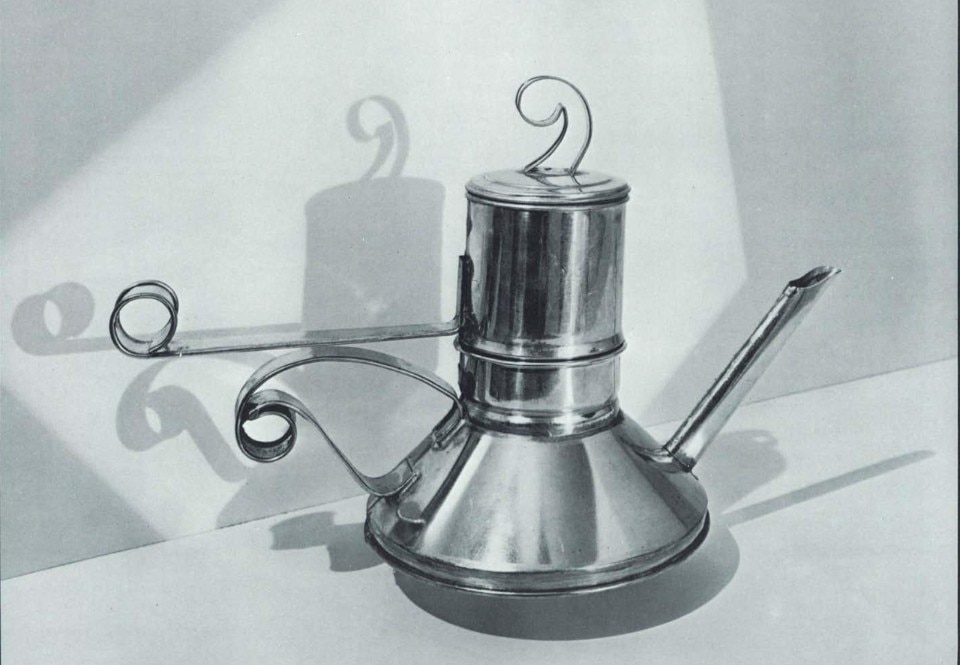
The large cup-shaped container is widened out to hold the upper tray. The six cups on the coffee maker form a friendly and interesting grouping (a tower with spires of soldiers on top, a panorama-view piazza for coffee cups, a hen with her chicks). On the other hand, it is a space used and distributed in the best way and yet it continually suggests a different and more ritualistic way of making and offering coffee, a way that is also more ordered. Anyway, a rite is surely no more than a co-ordination, hence enrichment, of feeling and functions that are normally separated. Tom Fool has nothing to do with this. He would be one of the festive company as friend, as a great fellow, as a slightly worrying rogue…
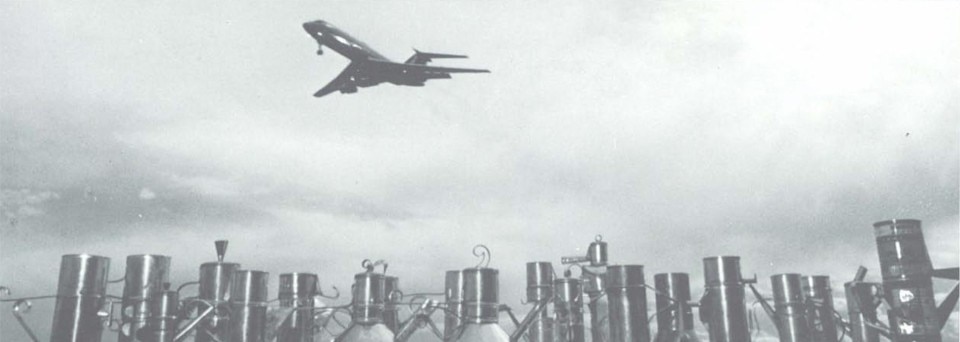
Ippocaffettiera
Theatrical objects in paper and metal, large robots: these are among the works realized by Riccardo Dalisi involving the concept of a small object in daily use.
“The idea of making a gigantic coffee-maker appropriate to the status of a city was conceived on the occasion of a show organized for “Summer in Naples”. Unfortunately, due to obstructionism in the Neapolitan municipal crisis, the effort has lost ground and has not been put on display. Imagination has projected this coffee-maker atop a horse, like a new king, on the bastion of Maschio Angioino. Now the object stays in the shop where it was conceived, a sort of metallic Golem that wants to stretch its legs and take a walk around Rua Catalana, just a few steps away from the Aragonese castle. But the coffee-maker does not enjoy much visibility in the current electorial climate, for fear that the monarchists presented as candidates could monopolize and crown it with accolades, thus hoping to win the elections.
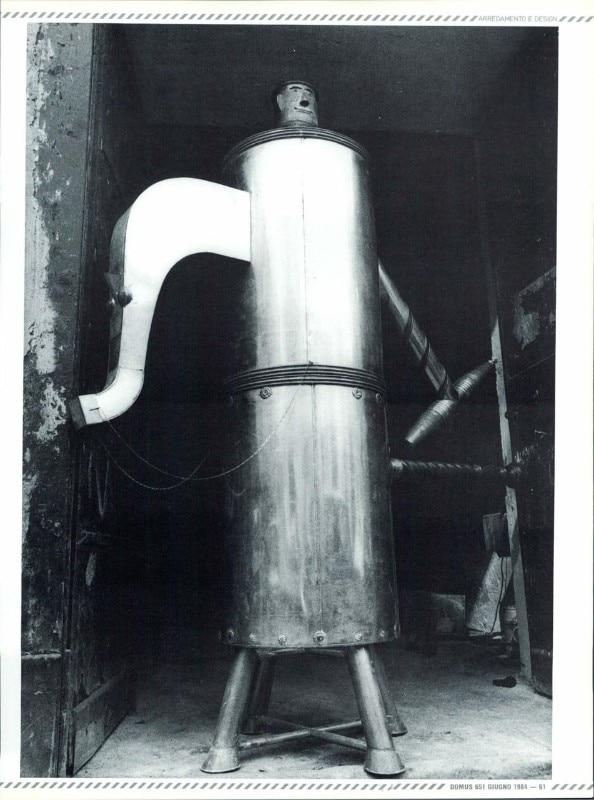
And as a little ancient king would want to present himself to the city in an equestrian mode, on top of a caracolling horse, so too does this Neapolitan coffee-maker try, artistically, to do the same thing. Moreover, this object is fused into it’s own noble mount, becoming a centaur. Besides, the horse also is a symbol of Naples, making the association clear. This object will continue combat on a battle-field within the world of actual design, and this battle must be fought in folkloric dress. A type of gigantic coffee-maker was not absent in ancient popular festivals but this was a purely folkloric gesture. Instead, the tradition resumed and re-studied here results, in many aspects, in a re-invention”.
